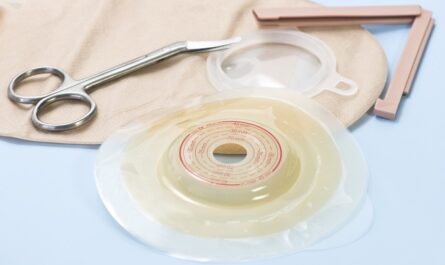Chronic pruritus can significantly impair one’s quality of life. While some cases of itch may be treated by addressing the underlying cause, many times it requires targeted anti-pruritic therapies. This article discusses the current and emerging therapeutic options for treating pruritus.
Topical Therapies
Topical therapies are usually the first line of treatment for localized pruritus. These include moisturizers, emollients, and topical corticosteroids. Moisturizers and emollients help restore the skin barrier and relieve itch by their hydrating and lubricating effects. Topical corticosteroids are very effective anti-inflammatory and anti-pruritic agents which can provide relief in conditions like atopic dermatitis. However, prolonged use is not recommended due to risk of side effects like skin thinning. Other topical preparations that have shown benefit include topical anesthetics, antioxidant creams containing glycyrrhizin or licorice extract, and topical vanilloids like capsaicin. Capsaicin works by depleting substance P, a neuropeptide involved in itch transmission.
Antihistamines
Antihistamines are the mainstay of treatment for itch mediated by histamine release, as seen in allergic conditions, insect bites, and urticaria. First generation sedating antihistamines like hydroxyzine and diphenhydramine are very effective in controlling itch but cause significant drowsiness. Therefore, newer second generation non-sedating antihistamines like cetirizine, loratadine and fexofenadine are generally preferred. These are as effective as first generation agents but cause much less sleepiness and impairment. For severe pruritus, higher than normal doses or combining different antihistamines may be tried.
Corticosteroids
Systemic corticosteroids are potent anti-inflammatory and anti-pruritic drugs. They can rapidly control severe generalized pruritus associated with various dermatological, systemic or neurological disorders. However, due to their adverse effect profile, they are recommended only for short term use. Local injection of corticosteroids can provide relief in pruritic conditions affecting localized areas like dyshidrotic eczema, lichen simplex chronicus etc. Intralesional injections of triamcinolone have shown good results for prurigo nodularis.
Emerging Targeted Therapies
Several new biological agents targeting specific mediators and pathways involved in itch sensation and transmission are being developed. These therapies hold promise for better relief of severe refractory pruritus with lesser side effects than conventional systemic drugs. Some of the emerging targeted options include:
– Opioid receptor antagonists like nalfurafine and Pruritus Therapeutics which can block itch signaling mediated by pruriceptive opioid receptors in the skin and CNS. Nalfurafine has shown efficacy in treating uremic and cholestatic pruritus.
– Neurokinin receptor antagonists like aprepitant work by antagonizing NK1 receptors involved in transmission of scratch signals from the periphery to the CNS. It has shown benefit in various types of pruritic conditions.
– Serotonin receptor antagonists like ondansetron target 5HT3 and 5HT4 receptors which have a role in modulating itch transmission in the spinal cord. Early studies showed ondansetron can reduce pruritus in cholestasis.
– IL-31 receptor antagonists like nemolizumab directly block the IL-31 pathway implicated in conditions like atopic dermatitis. Clinical trials found nemolizumab significantly reduced pruritus in AD patients.
– JAK inhibitors including tofacitinib, upadacitinib and baricitinib which dampen inflammatory pathways like JAK-STAT signaling involved in pruritus. These drugs are showing potential in treating moderate to severe pruritus of various dermatoses.
Phototherapy and Other Modalities
For widespread pruritus, phototherapy with natural sunlight, narrowband ultraviolet B or psoralen plus ultraviolet A can downregulate itch mediators and modify epidermal barrier function, offering useful relief. Other options tried include acupuncture, relaxation techniques, topical magnesium therapies, oral gabapentin/pregabalin (for neuropathic itch) and cryotherapy (for localized itch). Refractory severe pruritus is sometimes treated with intralesional botulinum toxin injections to provide temporary painless anhidrosis and reduce itch. Surgical removal of the affected区域 is considered in some nodular prurigo cases as a last resort.
Several therapeutic avenues now exist for managing pruritus depending on its etiology and severity. While topical therapies and conventional oral antihistamines are first line, newer targeted biologicals and immunomodulators hold promise as second line options for more refractory cases. An increasing understanding of the underlying pathogenesis of itch should aid in the continued development of novel effective and relatively safer therapies. Coordinated multidisciplinary care including psychological support can help improve quality of life in patients suffering from chronic pruritus.
Note:
1. Source: Coherent Market Insights, Public sources, Desk research
2. We have leveraged AI tools to mine information and compile it


